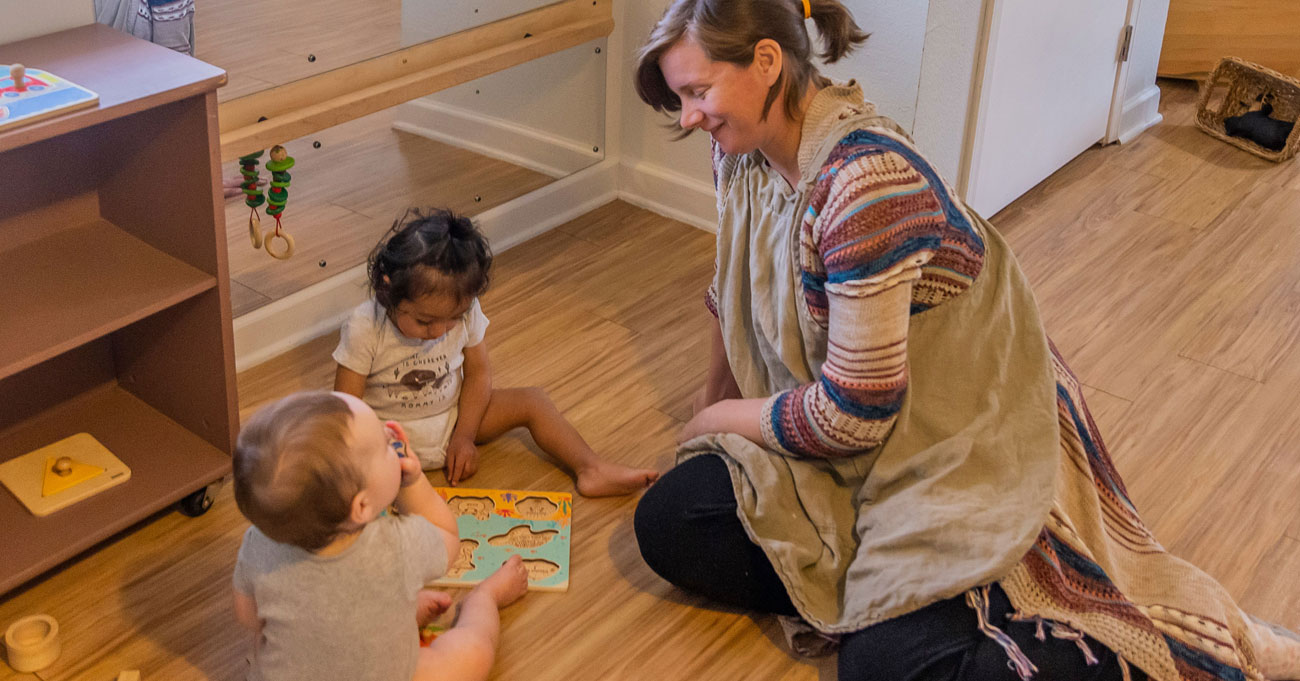
Choosing a child care setting for your infant, toddler or preschooler is a big decision, and quality is one of the most important factors to consider. Knowing the key elements of quality can help you make an informed decision when choosing a child care or preschool setting for your family.
Quality early learning settings build on basic health and safety to include:
- Teachers and caregivers who know how to work with infants, toddlers and preschoolers
- Positive, nurturing relationships that give young kids the individual attention they need
- Learning environments that encourage creativity and imaginative play
- Hands-on activities that stimulate and encourage positive brain connections in children
- Caregivers who provide regular feedback to parents on the development of their child
All of these elements combined make a child care environment that prepares children for kindergarten.
This checklist will help you recognize the key elements of quality and make a more informed decision when choosing a child care or preschool setting for your child.
BEFORE YOU VISIT A CHILD CARE PROGRAM
☐ Check the status of the provider’s license or certification.
Quality begins with basic health and safety. Child care centers and home-based providers who serve five or more children for compensation are licensed and monitored by the Arizona Department of Health Services. (Settings where parents are on the premises are excluded). To find out if such a program’s license is in good standing, visit the Arizona Department of Health Services. Providers on tribal lands or military bases may have their own licensing or certification requirements. Ask the provider for more information.
☐ Call the program director or child care home provider.
Some things to ask about:
- Hours of operation (evenings, weekends, holidays)
- Costs and available financial assistance and discounts
- Meals
- Transportation for children needing part-time care
- Policies regarding sick children and emergencies
☐ Schedule an in-person visit.
If you’re interested in learning more, let them know you’d like to drop in to visit the site in person. Quality providers will welcome a visit from you and your child during normal hours of operation. You will want to see the children interacting with teachers and caregivers, so ask about particular times of day to avoid, such as early morning, late afternoon or nap time.
 AT YOUR VISIT – QUESTIONS TO ASK:
AT YOUR VISIT – QUESTIONS TO ASK:
☐ Do you have a parent handbook?
Quality programs should offer you a copy.
☐ What are the qualifications of the director and teachers? How long have they been working with children?
Experience working with infants, toddlers and preschoolers as well as training or college coursework in early childhood development and education lead to quality adult/child interactions.
☐ How do you keep families informed about your program and their children’s progress?
Quality centers will post lesson plans, send parents information such as a newsletter, host regular parent/teacher conferences and keep you informed about your child’s activities.
☐ What is your ratio of teachers to children? Maximum group size?
These determine the level of care and attention your child may receive. Quality programs have smaller teacher/child ratios and limit group sizes.
Age of Children |
Preferred Teacher/Child Ratio |
| Birth-12 months | 1:5 or less |
| 12-24 months | 1:6 or less |
| 2 year-olds | 1:8 or less |
| 3 year-olds | 1:12 or less |
| 4-5 year-olds | 1:13 or less |
In mixed-age group settings, check these guidelines by the age of the youngest child in the group.
☐ How does the program deal with children with challenging behavior?
Quality programs have steps in place to prevent disruptions, communicate with the child, redirect the child, and communicate with the family. Time out is not effective in dealing with disruptive children.
AT YOUR VISIT – THINGS TO LOOK FOR:
☐ Positive, nurturing teacher/child interactions
- Does the teacher make eye contact with the children, smile and listen without interrupting?
- Is the teacher at eye level with the kids when they are interacting?
- Is the teacher interacting with children during activity times indoors and outdoors?
- Do you hear the kids talking more than the teacher?
- Does the teacher ask the children questions where they can give more than a yes/no answer?
- Are the children supervised at all times? Children should never be left alone and should always be within sight and sound of teachers.
☐ Classroom Environment
Is there ample space and materials to encourage play and learning within the children’s reach, including:
- Books, books and more books
- Blocks and puzzles
- Pretend play area with puppets, costumes, etc.
- Art /writing materials and musical instruments
- Textured materials, such as sand and water
- Science materials, like plants, funnels, magnifying glasses, etc.
☐ Outdoor Environment
- Is there an outdoor play area, with shade, that is used daily?
- Are items from the classroom brought outdoors to be played with?
- Are the adults actively engaged with the kids at play?
☐ Positive child/child interactions
- Are kids playing either together or side-by-side?
- Are children encouraged to work together to resolve differences or conflicts?
- Do kids move freely from activity to activity?
☐ Caring for Infants
- Are babies placed on their backs to sleep?
- Do babies spend part of their play time on their tummies?
- Do caregivers respond promptly to crying babies?
- Are babies held while being fed?
AFTER YOUR VISIT:
☐ Trust your instincts and also your child’s reactions to the teachers and environment.Questions to ask your child:
- Do you think you would like to go play there?
- What did you like best about the classroom?
- What did you like best about the teacher?

